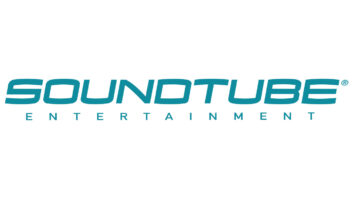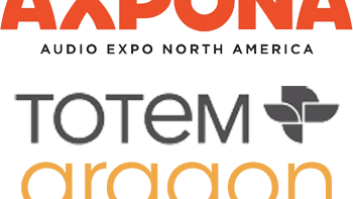As prices continue to drop and value escalates, the camcorder category should be more popular than ever with consumers this year, although manufacturers that attended the recent CES acknowledged competition is impacting profit margins.
Unit sales for the category last year were up 25.1 percent, to 4.8 million, according to CEA figures, and manufacturers see plenty of room for growth with a still-healthy 38 percent penetration level.
Regarding tape formats, manufacturers in the VHS compact camp say “C” continues to be very strong, and overall industry share for the C format rose in 1999 to about 24 percent.
Although analog 8mm declined in 1999, the 8mm category as a whole was up due to the strong performance of Sony’s new Digital 8 system.
Sony managed to drive the digital camcorder market behind its D8 message, which offered a popular combination of low entry prices for digital recording and a flexible media story.
Overall digital camcorder sales (combined DVC and D8) were up, accounting for about 21 percent of the industry mix, with a unit volume of about 900,000.
Hitachi, as previously reported will market this summer a DVD-RAM-based camcorder capable of recording two hours of video or capturing 2,000 digital still shots. The DZ-MV1 will sell for less than $2,000 and will produce on-the-fly MPEG2-quality pictures.
JVC announced its return to the Super-VHS-C format in camcorders in a big way. The company has added S-VHS-ET recording and playback capability to all but two analog VHS-C camcorders in the 2000 lineup. JVC added the S-VHS enhancement after seeing strong sales results from a market trial of S-VHS-ET models last year.
Super-VHS is seeing a comeback largely because of the introduction of ET technology, which allows S-VHS videos to be made on standard high-grade VHS-C tape. Additionally, many of today’s VCRs will play back S-VHS recording either in full S-VHS resolution or in quasi (standard VHS) resolution.
For 2000, JVC has adjusted the power-consumption level of all analog models, allowing for 120 minutes of recording time, up from 70 minutes last year. Additionally, all analog models this year feature time-base correction, chroma-enhancement circuitry, and an expanded package of digital special effects.
The analog VHS-C line includes two models: the non-LCD monitor GR-AX750 ($499 suggested retail price), which has a 16x optical, 300x digital zoom, and the GR-XM225 ($599 suggested retail), which adds a 2.5″ LCD monitor.
Five other analog models offer Super-VHS-ET capability. Non-LCD units include the GR-SX850 ($549) and the GR-SX851 ($569). The latter adds a built-in color-enhancement light.
Three remaining JVC models have LCD monitor panels of various sizes. The GR-SXM320 ($649) offers a 2.5″ LCD and 400x digital zoom, the GR-SXM520 ($699) jumps to a 3″ LCD monitor, and the GR-SXM920 ($799) adds both a 3″ LCD and DualCam capability, as well as 2MB of internal flash memory to capture digital still photographs.
The company is also carrying five digital camcorder models that are scheduled to ship in March.
The new top-of-the-line GR-DVL9800 is a DualCam model that includes removable MMC media, capable of storing digital still photos of up to XGA (1,024 x 768 resolution) on a card. The unit offers horizontal palm-size styling, a 10x optical/100x digital zoom lens and a 3.5″ LCD monitor.
The new entry digital model, GR-DVL300 ($999), includes a 680,000-pixel CCD, on-tape digital still image capability and a 2.5″ LCD monitor.
The line steps up to two models, each priced at $1,099 suggested retail. Model GR-DVL500 includes a color viewfinder and 3″ LCD monitor, while the GR-DVL505 trades the color viewfinder for 2MB of internal flash memory for digital still images.
Model GR-DVL805 ($1,199) adds a 3.5″ LCD monitor and 2MB of internal flash memory
Panasonic announced at CES five VHS-C analog models.
Three models now shipping are the PV-D300 ($399.95 suggested retail price), PV-L550 ($499.95) and PV-L650 ($559.99) — each of which features 18x “high definition” zoom and 150x digital zoom. All include Digital Electronic Image Stabilization, built-in auto light, color digital fade and motion-sensor activation.
The PV-D300 offers a color viewfinder. The PV-L550 adds a 2.5″ LCD monitor, and the PV-L650 adds a 4″ LCD monitor. The PV-L550 also features a two-hour battery pack, while the PV-L650 includes two-hour battery pack and IR remote control.
Also introduced by Panasonic were two PhotoShot combination camcorder/digital still cameras — models PV-L750 ($699.95, February) and PV-L850 ($799.95, February) — which bundle a digital still camera within a VHS-C analog camcorder. The PV-L850 features a television tuner and 480,000-pixel CCD for extra-sharp videos. The PV-L850 also bundles an analog NTSC tuner, so the 4″ LCD monitor can double as a mini TV set for portable broadcast watching.
Panasonic also announced it will ship in February five digital miniDV models: the PV-DV100 ($899 suggested retail), PV-DV200 ($999), PV-DV400 ($1,099), PV-DV600 ($1,299) and PV-DV800 ($1,399).
All but the PV-DV200 include 8MB MultiMedia Cards that will store up to 240 digital stills in normal compression mode. Additionally, four models offer three linking options for connecting the digital camcorder to a PC in order to transfer digital image files.
All five models feature an IEEE 1394 digital interface and what Panasonic calls PhotoVu Link (better known as an RS232 serial connection).
The PV-DV100 and PV-DV200 feature 2.5″ (diagonal) color LCD monitors. The PV-DV400 and PV-DV600 offer 3″ (diagonal) color LCD monitors. Model PV-DV800 features the WideSight 3.5″ (diagonal) color LCD monitor that allows easy viewing from any angle.
Samsung showed at CES two new miniDV digital camcorders. Senior national marketing manager John Havens said both units were shown last year, but for competitive reasons they never reached the U.S. market and instead were re-engineered.
The top-of-the-line unit SCD70 ($1,099.99 suggested retail price, second quarter) includes a Smart Memory card for storing digital still files, a 3″ LCD monitor panel and a new horizontal design.
Other features include an IEEE 1394 interface, RS232 connector, IR remote control and intelligent backlight compensation. Still photos can be stored in megapixel resolution when stored to internal Smart Memory.
Model SCD60 ($999, May) packages a 2.5″ LCD monitor screen and omits Smart Memory for digital stills but does include a snapshot mode to record still images to miniDV tape.
Both models offer NTSC and PAL playback capability for greater playback versatility around the world.
Havens said the analog camcorder line would be split between LCD- and non-LCD-equipped models. Most are set to arrive this spring, with core non-LCD models all featuring 22x optical zoom lenses.
The SCM55 ($429 suggested retail) is a non-LCD Hi8 with AFM Hi-Fi stereo sound. It includes an internal digital still camera.
In standard 8mm, Samsung is offering the SCM52 ($369) and SCM53 ($399), which adds image stabilization.
The core LCD models all feature color viewfinders, 22x optical and 440x digital zoom lens, lithium-ion batteries, digital noise reduction, time-base correction and a digital special effects package.
The SCL550 ($599) is a Hi8 model with 2.5″ LCD monitor, in-ternal memory for digital still files, Hi-Fi sound, and image stabilization.
Standard 8 LCD units include the SCL530 ($499) with image stabilization and the SCL520 ($429).
Sharp is offering new miniDV digital camcorders in the familiar ViewCam form factor.
Model VL-FD1 features a 3.5″ LCD screen, with special thumbnail frame indexing to show the start of scene transitions, annotation, IEEE 1394 digital interface, 10x optical and 200x digital zoom lens, lithium-ion battery and 380,000 CCD. It is set to ship this spring at a $1,699 suggested retail price.
Model VL-SD20 has a 3″ LCD screen, RS232 port, 10x optical, 100x digital zoom, lithium-ion battery, Snap Shot still frame model, and IEEE 1394 interface.
A new “subminiature” model, VR-PK100U ($899 suggested retail), is designed as a true hybrid digital still camera and camcorder. It weighs 1.21 pounds, includes a 660,000-pixel CCD and bundles an RS232 cable, Pixlab and MGI photo suite 8.0 software.
The analog models in Sharp’s lineup this year carry the ViewCam styling throughout. Four models are offered, with two each in the Hi8 and standard 8mm classification.
The standard 8mm camcorders are the VL-A10U with 16x zoom and 3″ LCD, and the VL-AH30U with 16x and 3.5″ LCD.
Hi8 models include the VL-AH50U with a Virtual Twin still image feature that splits a single CCD to allow a still image with a split screen or PIP inset. The Virtual Twin function can be used to add such information as stats on top of an action sport shot.
Sharp’s top-end analog model is the VL-AH60, which adds a 3.5″ LCD screen.
Sony announced a new lineup of Digital 8 models, playing off the tremendous early success of the new digital format that uses conventional Hi8 tape.
This year, Sony has added its Memory Stick removable flash media format to four of five new models.
New enhancements to Sony’s 2000 line include:
- Super LaserLink, which extends a wireless connection up to 26 feet.
- Thirty minutes more recording on 120-minute Hi8 tape, or up to 90 minutes of video in long-play mode.
- Longer zoom ranges up to 25x optical/450x digital.
- The Super NightShot infrared system that uses an automatic slow shutter control to offer smoother, brighter videos when recording in almost total darkness.
The line includes the DCR-TRV820 ($1,300 suggested retail), which is billed as the first digital camcorder with a built-in printer.
The unit will produce business-card-size digital still photos, enabling it to double as a Polaroid-like instant camera. Pictures can be printed from a video scene or a digital still saved on the Memory Stick media.
Other models include: the DCR-TRV120 ($800, March) 2.5″ LCD, 25x optical/450x digital; the DCR-TRV320 2.5″ LCD ($900, April), which adds Memory Stick capability; the DCR-TRV520 ($1,000, April), 3.5″ LCD; and the DCR-TRV720 ($1,200, April), 4″ LCD and color viewfinder.
Sony also announced a line of five analog Handycam 8mm and/or Hi8 models, which recently started shipping to dealers. This year’s line has been enhanced with longer zoom ranges and improved battery life.
Models include the CCD-TR517 ($330) a non-LCD unit with 20x optical/200x digital zoom, and the CCD-TRV37 ($400), which adds a light and a 2.5″ LCD ViewScreen.
Step-up models also include: the CCD-TRV57 ($500), which adds a 20x optical/360x digital zoom and SteadyShot image stabilizer; the CCD-TRV67 ($600), which adds Hi8 recording capability; and the CCD-TRV87 ($700), which adds Hi8-XR capability, Super NightShot function, Super LaserLink, Hi-Fi stereo sound and tape-based digital photo mode.
Sony also plans to announce new miniDV models prior to the spring.











